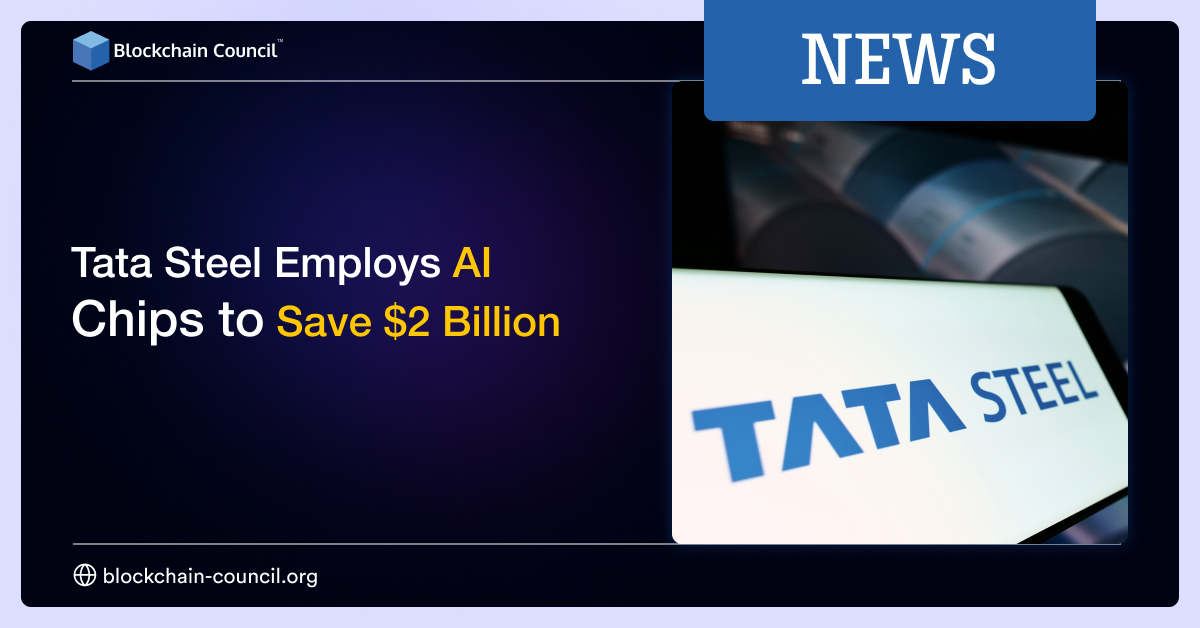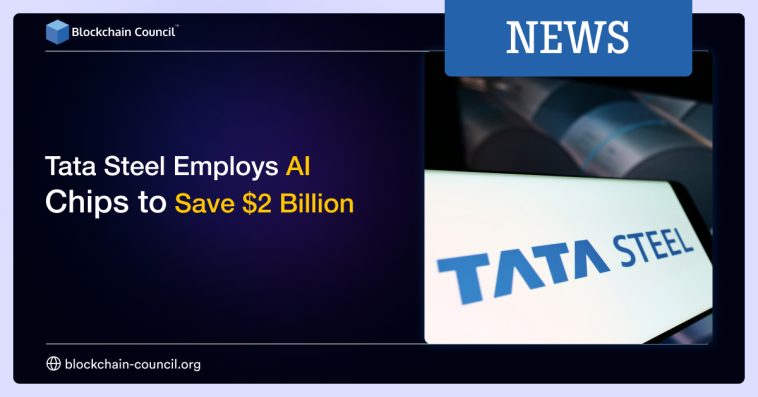
How Tata Steel is Using AI to Redefine the Steel Industry
Tata Steel, an institution with more than a century under its belt, is steering through the twists and turns of industrial innovation with a forward-thinking approach that combines traditional steelmaking with groundbreaking digital techniques. In a climate where many industries find technology adoption intimidating and overwhelming, Tata Steel’s journey serves as a beacon of hope for other companies wrestling with complicated pieces of modern transformation.
The company’s recent efforts to harness artificial intelligence have not only transformed its core production processes but have also reshaped its entire supply chain—cutting delivery times significantly and achieving remarkable cost savings. The story of Tata Steel is about more than just implementing new technology; it is about rethinking age-old manufacturing problems and reinventing the way a major industry operates.
Digital Transformation in the Traditional Steel Sector
The evolution of digital technology in manufacturing is often seen as a daunting challenge, especially for companies steeped in legacy systems and traditional practices. Tata Steel, however, has managed to figure a path that integrates state-of-the-art digital tools with decades of steel-producing expertise.
Beginning its digital transformation journey around 2017-18, Tata Steel was among the first to roll out an ERP system widely used in the industry. Combining this experience with a visionary technology roadmap, the company set two key goals: to emerge as a global leader in the steel industry by leveraging digital techniques and to generate at least $2 billion in potential savings through these digital innovations.
The company worked steadily on what could be seen as assembling a toolkit of digital instruments—ranging from enterprise resource planning software to advanced AI applications. This toolkit has helped Tata Steel not only to improve productivity but also to offer more predictable and reliable delivery timelines to its customers.
Leveraging AI to Tackle Tricky Parts of Steel Production
Artificial intelligence is often viewed as a mysterious black box where decisions are made with little visibility. However, Tata Steel is consistently using AI models to get into the nitty-gritty of its manufacturing processes. By deploying over 600 AI tools, approximately 80% of which are used in production, the company has made significant strides in ensuring quality control and operational efficiency.
For instance, AI imaging models are employed to detect defects in manufacturing processes—a key step in reducing waste and maintaining high-quality standards. These models reliably identify slight distortions that might otherwise be missed by traditional inspection systems. In addition, AI models measure the moisture content of coal, a critical input for the steelmaking process. Such an approach ensures that every piece of raw material is optimally used, reducing errors and boosting productivity.
In short, by addressing the confusing bits of the production line with precise digital tools, Tata Steel is setting a new industry standard for quality and consistency.
Streamlining the Supply Chain with Digital Tools
One of the most significant advantages stemming from Tata Steel’s tech transformation is the ability to shorten delivery times. Traditionally, the steel production cycle—from placing an order to delivery—can take anywhere between three to seven days. Thanks to digital monitoring and improved logistic tracking, Tata Steel now confidently states that it can deliver orders within 72 hours, a dramatic improvement over the previous seven-day period.
This dramatic change in the supply chain is achieved by mapping its sprawling operations spread across various locations, including India, the UK, the Netherlands, and Thailand. Consolidating data from these multiple sites allows the company to get around many of the tangled issues that typically delay production and transportation.
A table outlining the key components of Tata Steel’s streamlined supply chain can help illustrate this transformation:
| Component | Traditional Approach | Digital Transformation |
|---|---|---|
| Order Processing | Multiple siloed systems | Unified ERP-based system |
| Quality Control | Manual inspections with subjective measurements | AI-powered imaging and defect detection |
| Logistics & Delivery | Fragmented tracking and scheduling | Integrated digital mapping and tracking tools |
| Data Management | Isolated databases with limited connectivity | Consolidated operations with over 11.2 petabytes of data |
This table highlights how Tata Steel has tackled the confusing bits of its traditional operations with a suite of digital solutions that help ensure consistency and efficiency across the board.
Investing in Technology for Productivity and Savings
Beyond streamlining operations, Tata Steel’s investments in digital technology have also delivered substantial monetary savings. The company’s strategy was straightforward: every dollar spent on technology needed to return a measurable benefit to the organization. By consolidating all technological functions under a single leadership structure, Tata Steel ensured a unified approach to measuring the return on investment.
The company’s success in achieving at least $2 billion in potential savings through digital initiatives underscores the business’s commitment to making technology an essential part of its ongoing strategy. In an environment where twisted regulatory and operational challenges can often be overwhelming, Tata Steel’s approach is a testament to how businesses can thrive by making technology a core element of their business model.
A bulleted list summarizing the key benefits of adopting digital technology at Tata Steel includes:
- Enhanced production quality through AI-based monitoring
- Reduced delivery time from weeks to mere days
- Significant cost savings by optimizing resource use
- Improved operational oversight through integrated digital platforms
- Boosted customer confidence by ensuring timely delivery and quality assurance
Each of these points is not just a milestone in Tata Steel’s journey; they are a beacon for other industrial giants grappling with the tricky parts of modernizing legacy operations.
Creating a Unified Digital Vision for Business Transformation
Tata Steel’s digital journey has been built around a central premise: the whole is greater than the sum of its parts. By bringing together a wide spectrum of functions—including engineering, digital innovation, and information technology—under one roof, the company created what it calls a “single source of truth.”
This holistic approach allows Tata Steel to manage the subtle parts of its overall operations more effectively and ensures that every digital investment is aligned with its key performance indicators—yield, energy efficiency, throughput, quality, and productivity. This alignment is critical in an industry known for its complicated pieces of operations where even small errors can cause significant disruptions.
By centralizing its data and decision-making processes, Tata Steel is now better equipped to identify hidden complexities and manage them proactively. This organizational change has also helped foster a culture where digital innovation is not seen as a separate entity, but as an integral part of the company’s core values.
Utilizing AI to Monitor Safety and Optimize Operations
Beyond increasing efficiency and reducing costs, Tata Steel has also harnessed AI to ensure employee safety. Digital processes now play a vital role in monitoring how safety protocols are followed across various plants.
For instance, beyond using AI to detect defects in products, the company employs technological tools to check if safety measures are properly implemented. These algorithms help supervisors figure a path through many of the tangled issues surrounding workplace safety. Instead of replacing the human element, these systems serve as a co-pilot to assist employees, ensuring that protective measures are always observed.
This approach is essential in an industry that can often be dangerous and is loaded with safety challenges. Using technology to monitor compliance not only protects workers but also helps the company avoid disruptions caused by accidents—a win-win scenario for everyone involved.
The Future of Steel Manufacturing: GenAI and Robotic Co-Pilots
Looking ahead, Tata Steel is not resting on its laurels. As the world of artificial intelligence evolves, the company is already exploring new frontiers such as Generative AI (GenAI) and humanoid robotic systems that could take over more dynamic roles in the manufacturing process.
These anticipated breakthroughs are expected to address several ongoing twisted challenges—such as reducing delivery time even further, mitigating safety issues, and even creating entirely new service models. Tata Steel’s CIO envisions a future where robotic co-pilots are capable of taking command based on natural language commands, broadening the scope of what AI can achieve in an industrial environment.
This vision, where technology functions as an essential assistant rather than a replacement for skilled labor, reflects a careful balancing act between embracing digital advancement and safeguarding traditional jobs. In a market where the introduction of technology can sometimes be seen as a threat to employment, Tata Steel’s approach is to use AI as a tool to support its workforce rather than supplant it.
Understanding the Impact on the Broader Industry
While Tata Steel’s transformation is impressive on its own, its ripple effects are likely to be felt across the entire manufacturing and industrial sectors. Industry observers note that Tata Steel’s innovative use of digital platforms and AI tools sets a high standard for other companies. The move represents a paradigm shift that encourages factories and production houses to think beyond mere digitization and to plan comprehensive digital strategies that are aligned with business outcomes.
This trend is particularly significant given the reluctance many traditional industries have in embracing digital change. By proving that even an industry as laden with historical practices as steel manufacturing can benefit enormously from technological enhancements, Tata Steel is offering a roadmap for others to follow.
Other companies in industrial manufacturing, automotive, and even electric vehicles are taking note of Tata Steel’s success. The central lesson for many is that digital transformation is not just about technology; it’s about rethinking the entire business strategy in a way that leverages data-driven insights to solve the confusing bits of legacy processes.
Challenges and Opportunities in Adopting Advanced Technologies
Of course, no digital revolution comes without its own set of challenges. Many organizations find themselves facing intimidating obstacles as they try to implement AI and digital platforms into existing operations. The tangled issues range from integrating legacy systems to training staff on the little details of new technologies.
For Tata Steel, however, these challenges have been well-managed. The company invested in strong foundational digital blocks long before the benefits became visible and prioritized gathering extensive, actionable data. This early investment allowed it to overcome many of the nerve-racking parts typically associated with digital transformation.
Some of the key challenges faced by organizations during such transformations include:
- Integrating new systems with old, legacy technology
- Training staff to understand and effectively use the subtle parts of modern digital tools
- Aligning new technological initiatives with existing business KPIs
- Handling large volumes of data and ensuring its secure consolidation
- Establishing a unified digital vision across diverse operational functions
Overcoming these challenges demands more than just technical skills—it requires managerial creativity and robust project leadership. Tata Steel’s example demonstrates that when an organization works through these tricky parts methodically, the end results can exceed even the most optimistic expectations.
Real-World Benefits: Enhanced Customer Experience and Market Confidence
One notable advantage of Tata Steel’s digital strategy is the enhanced customer experience it offers. With the ability to confirm product availability within 72 hours, the company has elevated its reliability and responsiveness, thereby attracting customers from diverse demographics.
This improved service level is a critical part of maintaining a strong market position in today’s competitive environment. Companies that can deliver both quality and speed are increasingly seen as superior partners in an economy where time is as important as quality.
From a broader perspective, Tata Steel’s efforts to digitize its operations contribute to the larger narrative of industrial modernization across the globe. As banks, investors, and even government bodies start to favor businesses that can demonstrate efficiency and foresight, the integration of AI into traditional sectors becomes not just a competitive advantage but a key driver of economic growth.
Lessons for Other Industrial Giants
The Tata Steel story is instructive for many companies grappling with how to take a closer look at their operations and figure out the path to digital transformation. Here are some key takeaways that other industrial giants might consider:
- Embrace a Holistic Digital Strategy: Bring together various departments such as engineering, IT, and digital innovation under a single leadership to create a unified vision.
- Invest Early in Data Infrastructure: Building a robust data collection and management system is a prerequisite for successfully deploying AI tools.
- Focus on Measurable Outcomes: Every technological investment should be geared toward a tangible return that aligns with key business goals such as yield, energy efficiency, throughput, quality, and productivity.
- Use Technology as a Co-Pilot: Instead of viewing AI as a replacement for human labor, use digital tools to assist and enhance human performance.
- Plan for the Future: Keep an eye on emerging trends like GenAI and robotic co-pilots, which promise to further revolutionize operational processes in the near future.
By adopting these strategies, businesses can not only address the overwhelming parts of digital transformation but also harness the potential for long-term success in an increasingly digital economy.
How Transformative Digital Models Can Shape the Future of Manufacturing
Looking to the future, the importance of digital models in manufacturing cannot be understated. With Tata Steel leading by example, other companies are expected to follow suit by integrating AI, ERP systems, and real-time data analytics into their operational DNA. This evolution is critical for staying competitive in a world where technological advancements and customer expectations evolve rapidly.
In an industry characterized by both hidden complexities and overt challenges, companies must adopt a dynamic and innovative mindset. Digital transformation is not a one-time project but a continuous journey that involves constant tinkering with subtle details to optimize every facet of operations.
The new digital models are more than just an upgrade—they represent a revolution that changes every interaction along the supply chain, from procurement of raw materials to final product delivery. This integrated approach not only benefits the company internally but also drastically improves the experience of end users, who now receive faster, higher-quality products than ever before.
Collaboration Between Technology and Human Expertise
One of the most compelling aspects of Tata Steel’s approach is its emphasis on collaboration between technology and human expertise. While digital tools can rapidly process data and monitor operations, it is the human touch that interprets these insights and takes strategic decisions.
For example, rather than replacing workers with AI, Tata Steel is using technology as a supportive force—a true co-pilot that helps employees make informed decisions on the factory floor. This collaborative model not only alleviates the fear of mass unemployment due to automation but also amplifies the overall effectiveness of operations. The company’s commitment to this balance ensures that technology complements rather than compromises human expertise.
This kind of collaboration can be illustrated with a simple diagram that outlines the interaction between digital tools and human input:
| Step | Digital Role | Human Role |
|---|---|---|
| Data Collection | Automated monitoring of production metrics | Oversee and verify data accuracy |
| Data Analysis | Using AI models to pinpoint defects and inefficiencies | Interpret results and adjust strategies |
| Decision Making | Provide recommendations based on real-time analytics | Make final, informed decisions |
| Implementation | Enable process automation and monitoring | Manage and supervise workflow integration |
This simple structure shows how a well-synchronized relationship between digital technology and skilled labor can yield impressive results in productivity and safety.
Assessing the Broader Societal Impact of Digital Change
The ripple effects of Tata Steel’s digital journey extend far beyond internal efficiencies. In a market where employees often worry that technology might replace their roles, Tata Steel’s strategy offers an innovative solution: technology should serve as a sidekick rather than an adversary.
This balanced approach sends a powerful message: the future of work in manufacturing is about collaboration between humans and machines. As AI tools take over repetitive and labor-intensive tasks, the human workforce is freed up to engage in more creative and strategic roles. This not only boosts overall productivity but also creates an environment where technological change is seen as an opportunity rather than a threat.
Moreover, the digital transformation at Tata Steel contributes positively to local economies. Enhanced operational efficiencies reduce wastage and improve supply chain logistics, benefiting not only the company’s bottom line but also its network of suppliers, distributors, and customers. As Tata Steel continues to prove that implementing digital tools offers super important benefits, other industries may well follow in its footsteps.
Conclusion: A Blueprint for Industrial Renewal
Tata Steel’s journey towards integrating advanced AI and digital technologies into its operations presents a comprehensive blueprint for the future of manufacturing. By taking a measured approach—investing early in digital infrastructure, consolidating technology under one leadership, and using AI as a supportive partner—Tata Steel is effectively handling the tricky parts of a digital transformation that many others find overwhelmingly intimidating.
The company’s success in reducing delivery times, maintaining high quality, and achieving significant cost savings demonstrates that even industries with deeply rooted legacy practices can reinvent themselves. Its approach serves as a timely reminder that the future lies in better, more efficient, and collaborative ways of working, where digital tools and human expertise together navigate the curious bits of modern industrial challenges.
As Tata Steel continues to push the envelope with emerging technologies such as GenAI and humanoid robotic co-pilots, its story exemplifies how embracing digital transformation can yield remarkable improvements in performance, safety, and market confidence. For any business wrestling with the tangled issues of modernization, Tata Steel’s experience is an invaluable case study—a well-documented turnaround that shows just how critical it is to integrate innovative technology with practical, grounded strategies.
In the coming years, as artificial intelligence and digital platforms evolve further, more companies will be encouraged to follow Tata Steel’s lead. In doing so, they not only protect their own futures but also contribute to a broader industrial renaissance that promises faster, safer, and more efficient manufacturing practices worldwide.
Originally Post From https://yourstory.com/enterprise-story/2025/07/tata-steel-bets-on-ai-to-become-the-zepto-and-blinit-of-industry
Read more about this topic at
The AI Revolution: Transforming the Steel Industry Through …
Emerging Trends in AI Transforming Steel Processing


